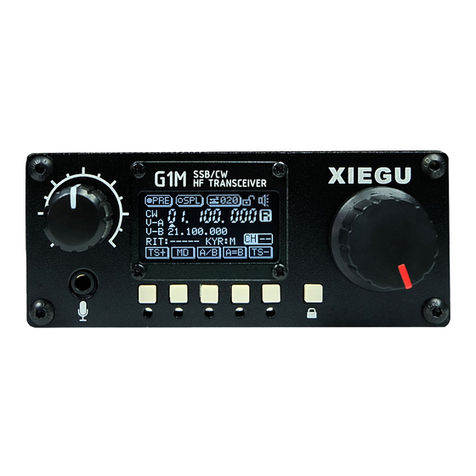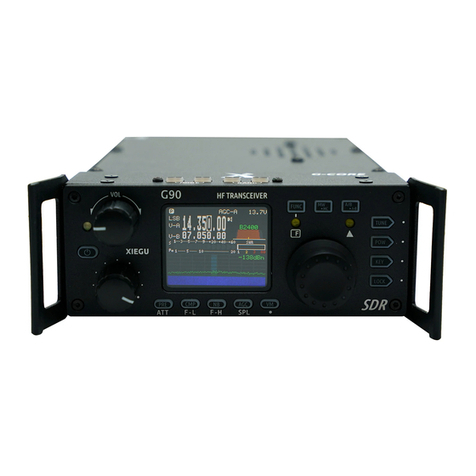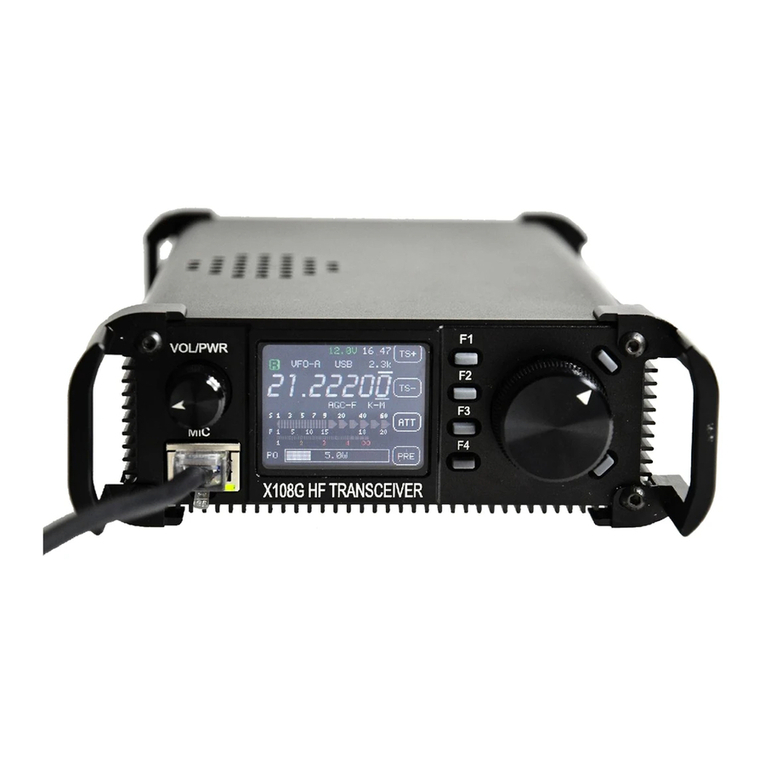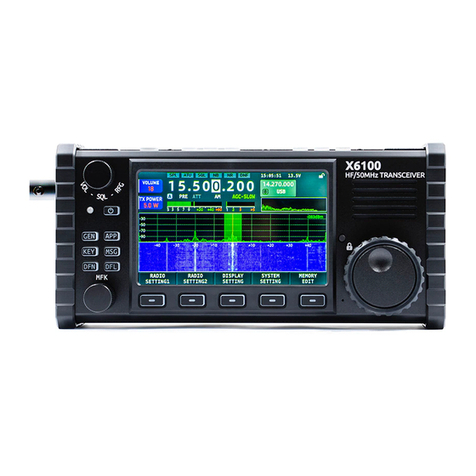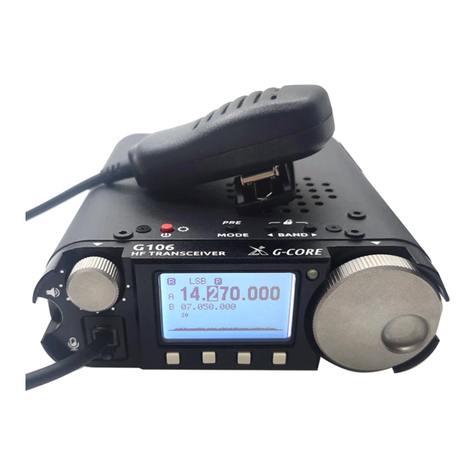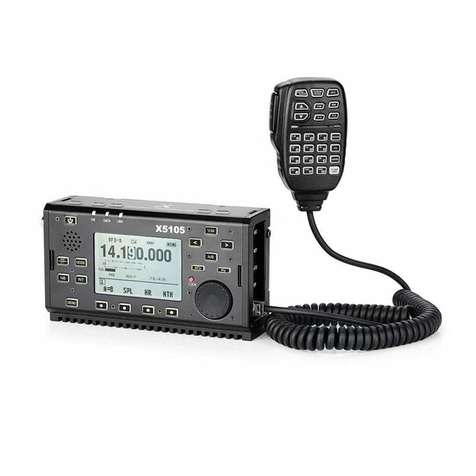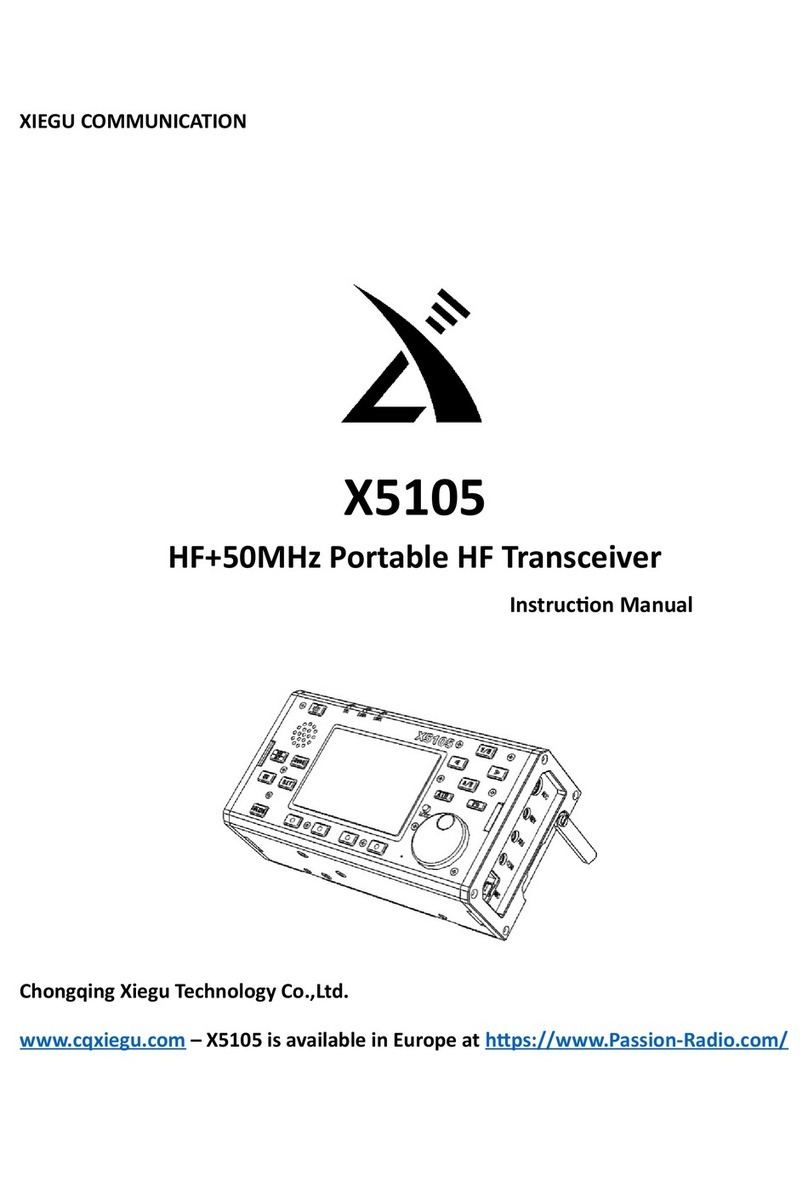
Panel Keys
4
1 Power switch
Press the key in a long time to turn on or turn off the radio.
2 MODE key
Press the key in a short time to change current working mode and
cycle in following sequence:
[ LSB-USB-CW-CWR-NFM-AM ]
3 PRE/ATT key
Press the key in a short time to turn on or turn off pre-amplifier or
pre-attenuator as following conditions:
[ PRE=ON---ATT=ON---PRE/ATT=OFF ]
4 RIT key
Press the key in a short time to enable RIT function.
5 NB key
Press the key in a short time to enable or disable NB function.
Press the key in a long time to switch the battery level/voltage
indication.
6 MENU key
Press the key in a short time to switch current multi-function menu.
7
~
10 multi-function menu keys
Press these four keys a short time to enable or disable corresponding
functions displayed in menu area on current screen.
11 LOCK key
Press the key in a short time to lock actions of all keys and knobs on
panel;
Press the key for 1s to turn on or turn off backlight of display screen.
12 Major knobs (large thumbwheel)
Major tuning knobs of radio can not only be used to adjust
frequency, but also can be used to set parameters.
13 ATU key
Press the key in a short time to connect built-in automatic antenna
tuner to antenna port, and press the key in a long time to start the
automatic antenna tuner for tuning.
14 Po key
Press the key in a short time to adjust transmitting power under
the cooperation of major tuning knob. The adjustment range is
0.1W~5W.
15 A/B key
Press the key in a short time to switch between VFOA/VFOB.
16 < key
Press the key in a short time to move the stepping position of
current frequency to left.
17 > key
Press the key in a short time to move the stepping position of
current frequency to left.
18 V/M key
Press the key in a short time to switch between VFO mode and
MEMO mode.
Press the key in a short time to switch to a higher frequency band.
20 DN key
Press the key in a short time to a lower frequency band.
19 UP key







